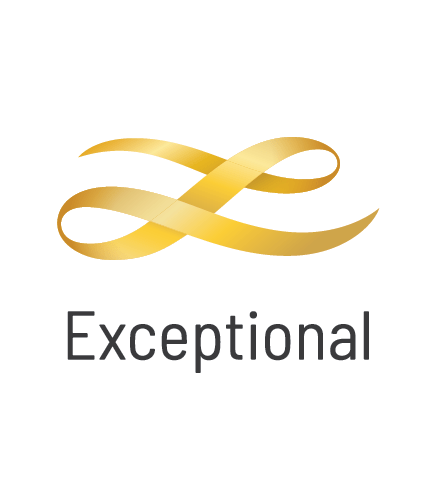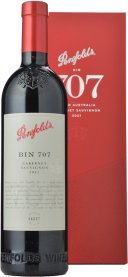$100 and over
Penfolds Bin 707
Bin 707 is a Cabernet Sauvignon reflection of Grange, intensely-flavoured fruit, completion of fermentation and maturation in new oak, expressing a Penfolds understanding of multi-vineyard, multi-region fruit sourcing. Bin 707 was first vintaged in 1964. The wine was not made from 1970 to 1975 when fruit was directed to other wines, nor in 1981, 1995, 2000, 2003 or 2011 (when fruit of the required style and quality was not available). Full bodied and with proven cellaring potential, Bin 707 retains a secure place among the ranks of Australias finest Cabernets.
Penfolds Bin 407 Cabernet Sauvignon
Penfolds Bin 407 began life back in 1993 with the release of the 1990 vintage Cabernet Sauvignon. Created as a result of the availability of high quality Cabernet fruit, Bin 407 is inspired by its older brother, Bin 707. Not only offering varietal definition, but also approachability, structure and depth of flavour. The Bin 407 highlights the Penfolds approach to multi-region, multi-vineyard blending to create a Cabernet that rewards the drinker in both early and later years.
Chateau Lynch-Bages 5me cru classe
Lynch-Bages is an iconic fifth growth of Pauillac and has the distinction of having produced the only wine that has ever been sent into space. Established in the early 1700s, the wine was labelled Chateau Jurine Bages at the time of the 1855 classification, later renamed in recognition of earlier owners the Lynch family. Jean-Charles Cazes purchased the property in the 1930s, later passing the management of the estate to his grandson Jean-Michel Cazes who modernised the winery and was a prolific spruiker of not just his own wines, but those of all Bordeaux throughout the 70s and beyond. Now managed by the next generation, (another Jean-Charles) Lynch-Bages continues to produce Cabernet Sauvignon-led wines of great concentration, offering ripe cassis and enviable cellaring potential.
Chateau d'Issan 3me cru classe
Chateau Duhart-Milon-ROTHSCHILD 4me cru classe
Chateau Duhart-Milon is a fourth growth (Quatrième Cru Classé) estate in the Pauillac appellation of Bordeaux. Part of the Domaines Barons de Rothschild, the wine is made by the same winemaking team as Chateau Lafite. A blend of Cabernet Sauvignon with a substantial component of Merlot, the Grand Vin is matured for 18 months in approximately 50% new French oak barriques. Chateau Duhart-Milon is typically a sturdy solid Pauillac with firm structure and earthy savoury richness.
Lokoya Spring Mountain Cabernet Sauvignon
LOKOYA Spring Mountain Cabernet Sauvignon, Napa Valley
Moss Wood Moss Wood Vineyard Cabernet Sauvignon
Moss Wood Moss Wood Vineyard Cabernet Sauvignon, Margaret River Moss Wood is one of the Margaret River originals (planted 1969; first vintage 1973) and this iconic flagship wine Langtons Classified since 1990 has long been Western Australias leading Cabernet Sauvignon. Figures from the cellarage company Wine Ark show that it consistently rates as Australias Most Collected Cabernet. Moss Wood Cabernet Sauvignon is intensely perfumed and finely structured with cassis-blackcurrant aromas, hints of cedar and touches of violet. The oak and fruit are neatly balanced. With proven ageing potential the wine develops subtle earth/demi-glace briar characters on the bouquet, and complexity and suppleness on the palate. The unirrigated and widely spaced vineyard (now 14.86-hectares) is planted on gentle north-east facing slopes with sandy loams to a gravelly red/brown loams over clay. Typically the fruit is hand-picked, de-stemmed into open tanks and hand-plunged four times a day until completion of fermentation. At the end of vinification, the wine is allowed to macerate for around 10 to 14 days prior to pressing off into barrel. The wine is matured in 30% new and seasoned French oak barriques for 24 months.
Wynns John Riddoch Cabernet Sauvignon
Wynns John Riddoch Cabernet Sauvignon is the icon Coonawarra Cabernet Sauvignon. Named after Coonawarra pioneer, pastoralist and parliamentarian, John Riddoch, this Cabernet Sauvignon is sourced from the very best of Wynns vast planting in Coonawarra and it only made in the years that best express Wynns strive for excellence. Arguably richer and more complex from comparable styles in the region, John Riddoch Cabernet is highly sought after and extremely limited.
Napanook Cabernet Blend
NAPANOOK Cabernet Blend, Napa Valley The second wine of Napa Valley’s famed Dominus Estate, this wine is made solely from grapes grown at the historic Napanook Vineyard in Yountville, Napanook is blended from vineyard blocks carefully selected for their lively fruit, soft tannins, and early maturing characteristics. The wine is created to be consumed young and enjoyed with food, but will also age well for more than a decade. The vineyard is entirely dry-farmed, allowing the vines to draw deeply on the land’s unique geology. The viticulture and winemaking are undertaken meticulously, with the objective of producing wines that are pure, balanced, and complex. Minimal intervention and restraint throughout the process of grape berry selection, fermentation and ageing preserve the character of the fruit. The resulting wines, with a tremendous potential for ageing, convey the very personality of this historic vineyard.
CHATEAU LA MISSION-HAUT-BRION Cru classe
Château la Mission Haut-Brion is on uniquely stony soil in the Pessac-Léognan appellation close to the city of Bordeaux. It is a Cru Classé in the Graves Classification of 1953. The 22.5 hectare red wine vineyard is planted to Cabernet Sauvignon (46%), Merlot (44%) and Cabernet Franc (10%). The chateau wine is vinified in large (180hl) temperature-controlled, stainless steel vats and aged in 100% new French oak for an average of 22 months. Annual production is 6000-7000 dozen. The famous white wine of the chateau comes from 3.5 ha planted to Semillon (62%) and Sauvignon Blanc (38%). Overall planting density is 10,000 vines per hectare (red) and 8000 vines per hectare (white). Since 1983, under the ownership of Domaine Clarence Dillon (which also owns the neighbouring Chateau Haut Brion), the entire estate has been renovated vineyards, winemaking facilities and the chateau itself. The property got its name in the 1600s when it was owned by the Catholic Church.




























































